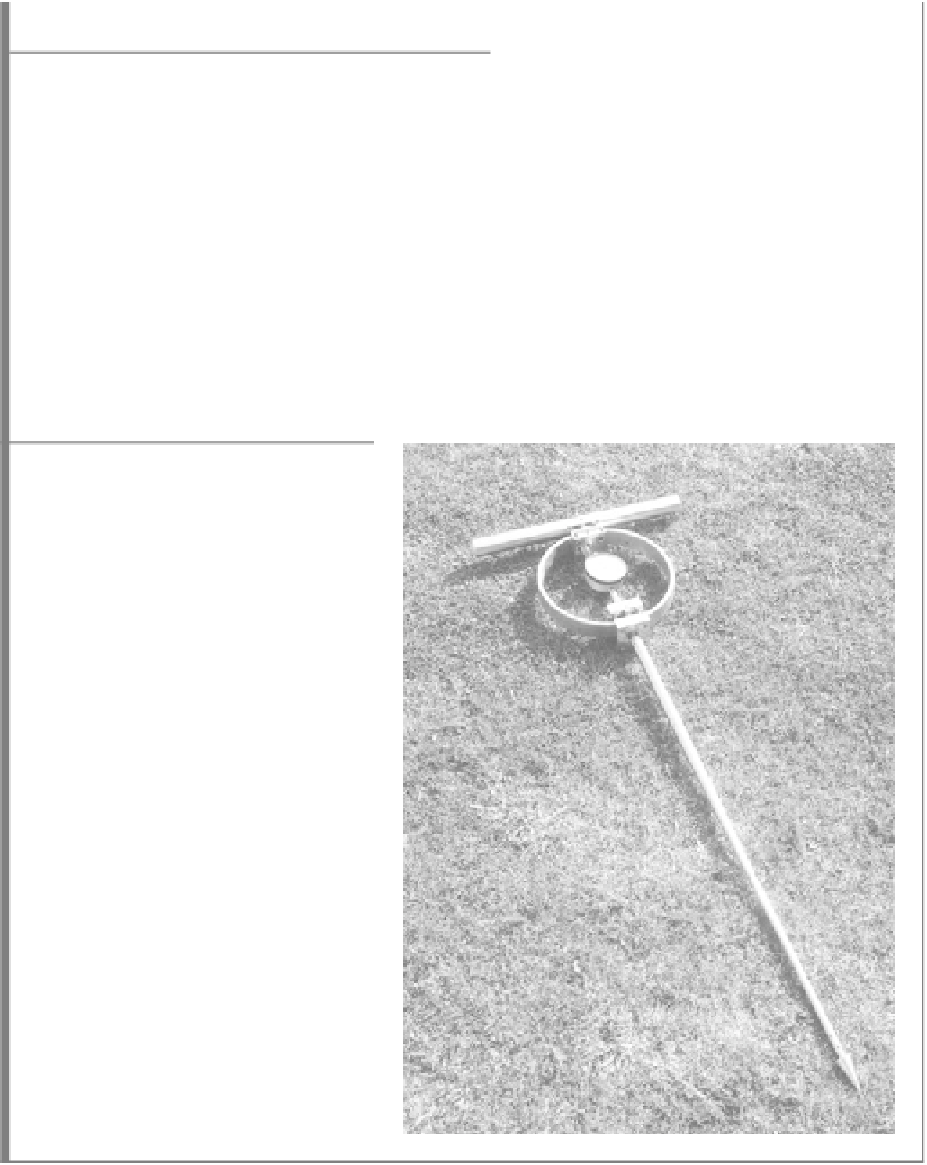Agriculture Reference
In-Depth Information
Box 7.1
Measuring Soil Strength in the Field
The soil's strength is measured by the strength of the resisting force it offers
to penetration with a
penetrometer.
This instrument consists of a steel rod about 1
m long, with a conical tip at the base and a proving ring and strain gauge at the
top (figure B7.1.1). As the conical tip is pushed into the soil, the ring is distorted
and the force recorded by the gauge. The rod is graduated so that the depth of
penetration can be measured. The readings are most reliable when the rate of entry
of the rod is constant. Penetration resistance can be very variable spatially, so a
large number of readings are required. Because soil strength depends on soil
wetness (see fig. 7.1), the measurements should be made at the same water
content, usually the
FC
. Penetrometer measurements are used to detect natural or
induced hard pans in soil, and hence to guide the deployment of ameliorative
treatments, such as deep ripping.
Figure B7.1.1
A cone penetrometer for
measuring soil strength
(White 1997, courtesy of
D.B. Davies). Reproduced
with permission of
Blackwell Science Ltd.
irrigated vines. Table 7.2 shows some typical
PAW
values for soils of different tex-
ture for vines with several rooting depths.
However, the
PAW
is only a measure of the potential size of the “soil water
bucket” that can hold available water. More important for quality grape produc-
tion is the avoidance of undue water stress at critical stages of flowering and fruit
development. In the absence of irrigation, this requires the soil to release a sub-

